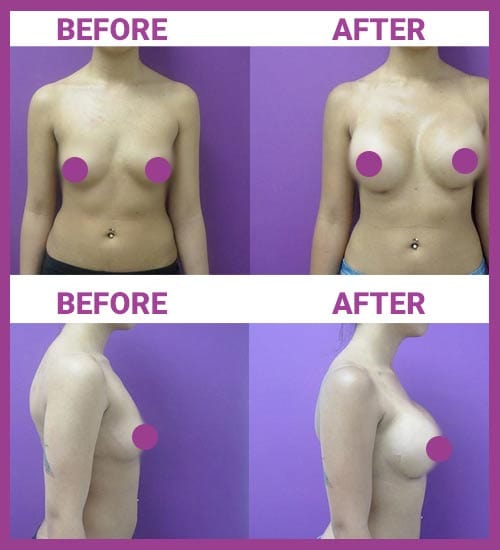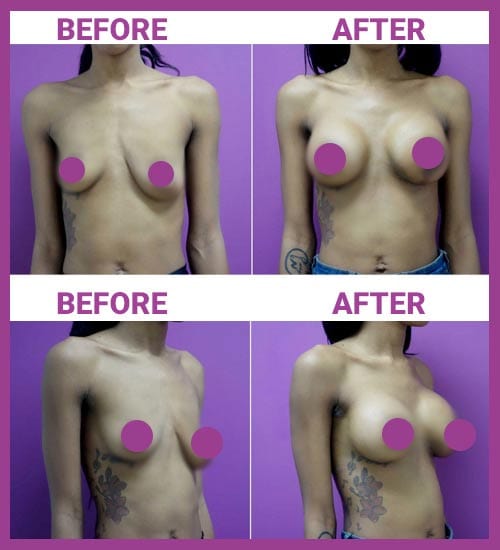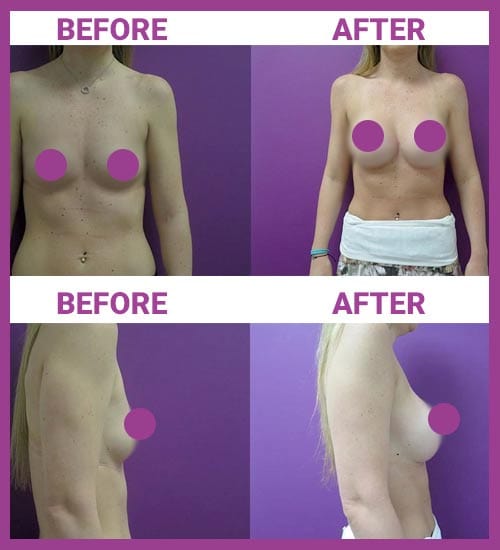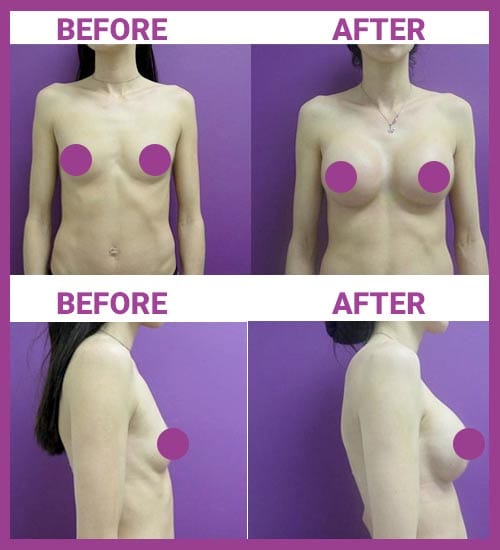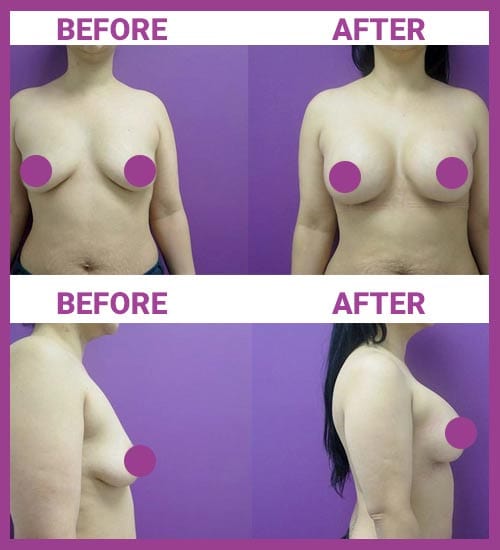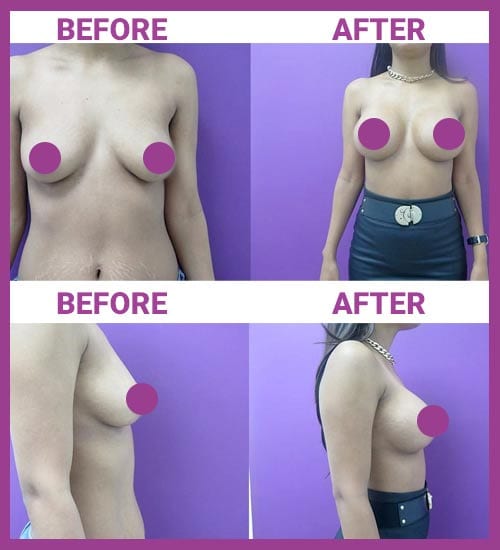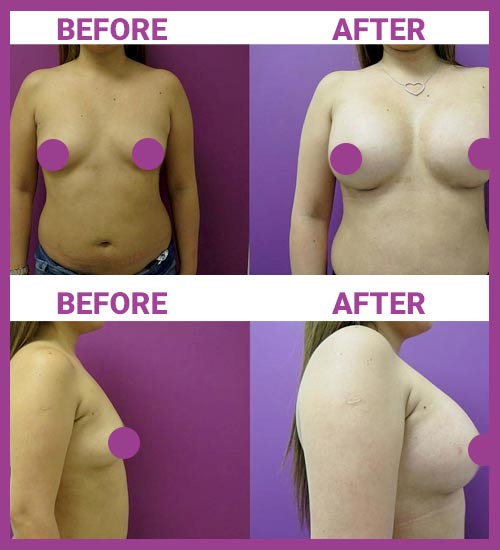
SURPRISINGLY
AFFORDABLE
BREAST AUGMENTATION

SURPRISINGLY
AFFORDABLE
BREAST AUGMENTATION

SEE IF YOU QUALIFY
$400 OFF BREAST AUGS
BREAST AUGMENTATION FOR $3,500 VS. $3,900
Only Valid for Surgeries Completed by 10/31/2019 – HURRY TIME IS RUNNING OUT!
#1 BREAST AUGMENTATION SURGEONS
Have you ever wished your breasts were bigger? If so, then you’ve likely considered breast augmentation. For many women, the size or shape of their breasts is a constant disappointment. Feeling more confident in swimsuits or strapless dresses are some of the reasons so many patients seek breast augmentation surgery.
The expert team at Doctors Plastic Surgery is focused on providing you with the absolute best cosmetic surgery experience. We work with state-of-the-art technology to offer the most modern treatments, performed by a team of experienced Plastic Surgeons, in a safe facility — all at a reasonable price.

THE PROCEDURE
The breast augmentation surgery is simpler than most patients realize. For a few weeks prior to surgery, you may be required to stop taking natural supplements and some over-the-counter medications. This is to prevent complications during the surgery. On the day of the procedure, general anesthesia is typically used to keep patients safe and comfortable during the surgery.
A small incision is placed in one of several locations near the breast, allowing the implant to be inserted either above or below the pectoral muscle. Once both sides have been completed, the incisions are closed and the surgery is over. This process typically takes under an hour. Patients generally return home the same day of the procedure.
THE PROCEDURE
The breast augmentation surgery is simpler than most patients realize. For a few weeks prior to surgery, you may be required to stop taking natural supplements and some over-the-counter medications. This is to prevent complications during the surgery. On the day of the procedure, general anesthesia is typically used to keep patients safe and comfortable during the surgery.
A small incision is placed in one of several locations near the breast, allowing the implant to be inserted either above or below the pectoral muscle. Once both sides have been completed, the incisions are closed and the surgery is over. This process typically takes under an hour. Patients generally return home the same day of the procedure.
BEFORE & AFTER
BEFORE & AFTER
RECOVERY
Recovering from surgery is never comfortable, but you will be prescribed pain medication to control your discomfort and help you get through the first few days following the procedure.
Initially, your breasts will be wrapped with gauze and you’ll wear an elastic bandage or support bra following the procedure. You will be given specific instructions on how to care for your breasts for optimal healing, which you should follow to the letter. These instructions may include everything from special massages to perform, to which positions you should sleep in.
Most patients feel well enough to return to work and light normal activities within a week or two, but it’s important to rest and recover at your own pace.
RECOVERY
Recovering from surgery is never comfortable, but you will be prescribed pain medication to control your discomfort and help you get through the first few days following the procedure.
Initially, your breasts will be wrapped with gauze and you’ll wear an elastic bandage or support bra following the procedure. You will be given specific instructions on how to care for your breasts for optimal healing, which you should follow to the letter. These instructions may include everything from special massages to perform, to which positions you should sleep in.
Most patients feel well enough to return to work and light normal activities within a week or two, but it’s important to rest and recover at your own pace.
HOW MUCH & WHAT'S INCLUDED?
HOW MUCH & WHAT'S INCLUDED?

EVERYTHING IS INCLUDED!


SEE IF YOU QUALIFY
“This was my first consultation and it was great! The staff was very friendly. Dr. AZIZI was very nice and professional. All my questions and concerns were answered.”
– B.B.
“This was my first consultation and it was great! The staff was very friendly. Dr. AZIZI was very nice and professional. All my questions and concerns were answered.”
– B.B.
FREQUENTLY ASKED QUESTIONS
ARE BREAST IMPLANTS PERMANENT? WILL I EVER HAVE TO REPLACE THEM?
Unfortunately, not all breast implants last forever. They typically come with a warranty but may have to be replaced beyond the terms of the warranty, once the warranty expires. With that said, replacement typically does not have to take place unless there is a problem with the implant, such as rupture or capsular contracture (internal scar tissue). Many women have their breast implants for 5, 7, 10 years or more with no problems! In fact, many replacements are due to a desire for a change in size, not because of the age of the implants.
WHAT ARE THE RISKS AND POTENTIAL COMPLICATIONS OF THE SURGERY?
All surgery carries some risk, and breast augmentation is no exception. Patients may experience bleeding, infection, poor healing, implant rupture, capsular contracture (scarring underneath the skin, which squeezes the implant, making it misshapen), or rippling beneath the skin. By working with an expert plastic surgeon, like our expert doctors in Chicago, you can minimize your risk for complications.
WHERE WILL MY INCISIONS BE PLACED?
There are several possible locations for the incisions depending on the implant being used and the patient. The most common are around the areola (nipple area), through the armpit, or in the fold below the breast. Any incisions made will be carefully placed to minimize the appearance of any scarring.
WILL THERE BE SCARRING?
All surgery produces some scarring, but breast implant surgery is carefully performed to minimize the amount of visible scarring. Most patients find that these scars fade quite well and are barely noticeable.
WILL ANYONE BE ABLE TO TELL I HAVE IMPLANTS?
Breast implants, especially silicone gel implants, have come a long way and look and feel more natural than they used to. However, saline implants are a bit harder and more uniform than natural breast tissue, and may not feel or look quite the same as normal breast tissue. Most patients are very satisfied with the look and feel of their implants after the procedure.
SHOULD MY IMPLANTS BE PLACED OVER OR UNDER THE MUSCLE?
Every patient is different, and your surgeon will discuss your options with you prior to your procedure. Generally, patients who are receiving saline implants, those who have naturally small breasts, or those with a family history of breast cancer may opt for under the muscle placement. Patients who want silicone implants or those who have more natural tissue may benefit from the over the muscle placement. The surgical technique that is best for you, however, will depend on your surgeon’s evaluation.
WHAT SIZE SHOULD I CHOOSE?
Your implant size is a very personal decision and not something to take lightly. You should “test” different sizes by adding rice to a bag and placing them in your bra to get an idea of how different sizes will look. Your surgeon will also be able to provide some guidance. You might be surprised to find that a smaller size suits you better than large implants!
WILL I BE ABLE TO BREASTFEED AFTER BREAST AUGMENTATION?
While some women do experience problems breastfeeding after an augmentation procedure, others have no issues. It’s a small risk associated with breast implants. Some women choose to wait on the surgery until they are done having children for this reason.
ARE SILICONE OR SALINE IMPLANTS BETTER?
Both silicone and saline implants are great options, and the choice is purely personal. Saline implants are generally smooth and round, while silicone implants tend to be softer and more anatomical in shape. You and your surgeon will discuss your options before you make a decision.
WILL MY BREAST AND NIPPLE SENSITIVITY CHANGE AFTER BREAST AUGMENTATION?
During recovery, sensation will likely change as the breasts heal (the first 6-12 months). Afterwards, you may notice an increase or decrease in sensitivity, but this varies from patient to patient and is difficult to predict.

